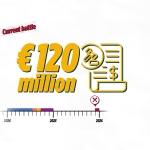Institutional interest in digital assets is on the rise, with over 900 institutions based in the United States disclosing spot Bitcoin ETF holdings exceeding $100 million each, totaling $10.7 billion combined. Additionally, major asset management firms like BlackRock and Franklin Templeton have launched tokenized treasury funds, with over $1 billion in treasury notes tokenized on public blockchain networks. A KPMG survey in Canada revealed a significant increase in crypto holdings by institutional investors in the region, with 22% more financial services organizations offering crypto asset products and services to clients in 2023 compared to previous years.
However, institutions are facing challenges with digital asset data management. Isabella Henderson from Amberdata highlighted the density and complexity of digital asset data, with each crypto exchange using different tickers and asset instruments. This lack of standardization creates consistency and reliability challenges for institutions, leading to a fragmented view of the crypto sector. To address this issue, Amberdata recently launched ARC, an open-source institutional-grade security master database for digital assets, enabling financial institutions to segment and view the digital asset sector consistently.
ARC unifies front, middle, and back offices for institutions holding digital assets by providing reference details, classification, and categorization. Through data collected by Amberdata across over 150,000 spot, options, and futures instruments, ARC shows token addresses, contract and trade specifications, price limits, exploits, and more. This tool helps institutions keep records of the dynamic digital asset universe, optimize execution workflows, enhance trade execution strategies, and provide accurate asset and classification information for reference and analysis.
Institutions also need data management tools to evaluate risks associated with digital assets. A Deloitte poll shows that executives expect digital asset risks to increase and the regulatory environment to become more complex in the coming year. Chainalysis offers on-chain data to help institutions evaluate risks related to digital assets, such as understanding asset distribution, liquidity, usage within the crypto economy, and potential illicit or risky segments. Despite the newness of digital assets in institutional portfolios, experts believe that organizations actively using digital assets should prioritize digital asset risk management on their board agendas.
While it remains uncertain whether institutions will immediately implement digital asset management tools, Isabella Henderson expects financial institutions to use ARC in the future. She mentioned that ARC integration has already begun for some institutions, and as an open-source platform, ARC will evolve with contributions from the financial and digital asset investor communities, ensuring the dataset remains relevant and up-to-date. However, challenges may arise, such as privacy concerns for institutions building products on blockchain infrastructure who need to comply with customer data privacy laws and confidentiality while utilizing transparent public blockchains.









